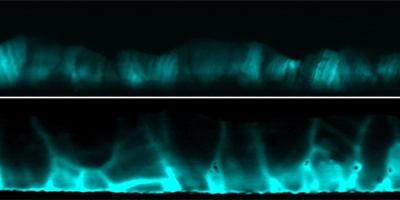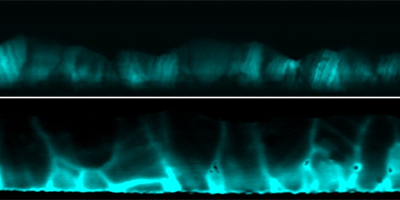The Key to Thin-Film Solar-Cell Efficiency
Thin-film solar cells made their debut in pocket calculators, but they are now a serious competitor to silicon cells for power generation, with comparable efficiencies and rapidly decreasing costs. Cadmium telluride (CdTe) is one of the most promising thin-film materials. Its record efficiency was boosted to by including a step during synthesis in which the material is treated with cadmium-chloride ( )—a process meant to suppress or eliminate the detrimental effects from defects (i.e., to “passivate” them). But why passivation led to better efficiency has remained a mystery and progress has been driven by incremental trial and error. Now, as reported in Physical Review Letters, Chen Li and colleagues at Oak Ridge National Lab, Tennessee, the University of Toledo, Ohio, and the National Renewable Energy Laboratory, Colorado, have elucidated the atomic mechanisms of this phenomenon.
A CdTe thin film is a polycrystalline material made of many grains of CdTe single crystals. Compared to a perfect single crystal, one would expect that polycrystalline grain boundaries are detrimental, acting as recombination centers for the electron-hole pairs generated when a photon is absorbed. But through a combination of atomic-resolution electron microscopy and density-functional theory, the authors studied the atomic and electronic properties of grain boundaries and showed that they play an unexpected role: During treatment, Cl takes the place of a large fraction of Te atoms at the grain boundaries. This turns the boundaries into local - junctions, which separate photogenerated electrons from holes, protecting them from unwanted recombination. The results explain the benefits of the passivation treatment and may suggest new fabrication strategies for further efficiency improvements. – Matteo Rini





